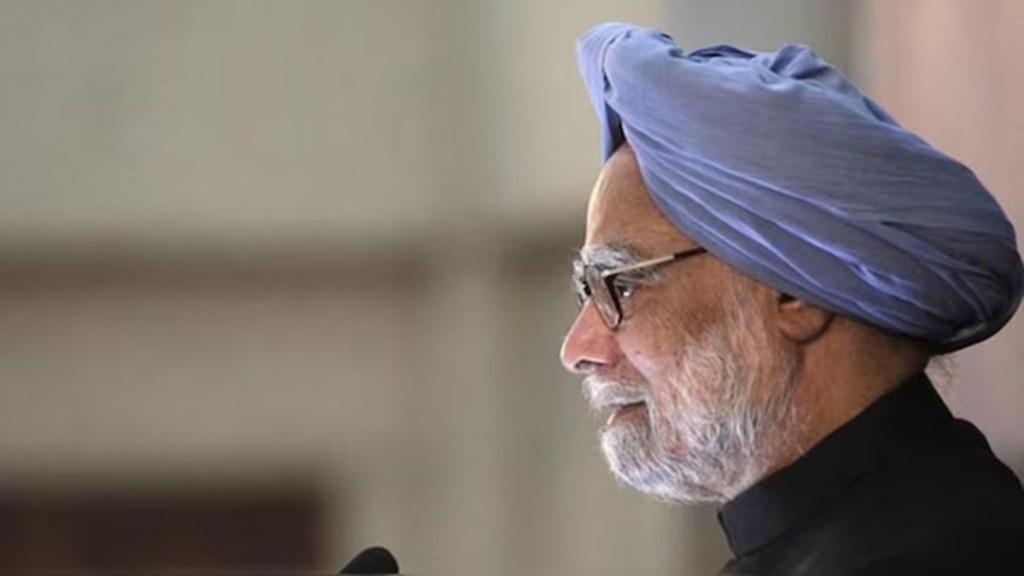By Ashima Goyal
In addition to his invaluable contributions, Manmohan Singh has left powerful lessons for us with his personality as well as his policy successes and failures.
As a person, he retained his gentleness, humility, and simplicity, however exalted his post. Lesson one thus is that decency plus ability gets results, despite views to the contrary. It gave him the opportunities he wanted to serve the country.
With his sharp intellect and deep experience within the system, he understood what was feasible. While he did not waste his time tilting at windmills, he showed tremendous courage and persistence in whatever he undertook. The “sarfaroshi ki tamanna” was clear in his famous Budget speech. While we can wish he had done more, especially in his second term as Prime Minister, there were the compulsions of a coalition government and a vitiated national atmosphere.
The Indian voter seems to have learnt this lesson and has largely voted stable governments since, both at the Centre and in states while keeping competition alive and often punishing non-performance. The lesson for governments is that although delivery is made more feasible, re-election is conditional on performance.
Many of the corruption allegations during the second tenure of the United Progressive Alliance (UPA) turned out to be overdone. But they originated from too much discretion in resource allocation, even as growth was driving up their value. Systemic improvements and a better understanding among regulatory and judicial institutions of necessity for economic expertise did yield results.
While Singh’s credentials as a liberaliser are justly celebrated, the fourth under-appreciated lesson is the subtlety and context-sensitivity of India’s liberalising reforms. They followed a gradualist path carefully laid out by committees of experts, consistent with India’s structure and needs. As an example, consider the sequencing of capital account convertibility, where liberalisation was more for foreign direct and equity flows and the least for short-term debt. Debt inflows were capped as a percentage of domestic market size. As a result, capital flows rose, along with the deepening of the domestic market. Thus, diversity increased but volatility was contained. This approach saved India from spillovers during the East Asian crises or the large interest rate volatility that Indonesia experienced during the taper tantrum, even as rising capital inflows contributed to the sophistication of our markets. On this path towards fuller capital convertibility, administrative freedoms will rise, even as foreign capital approaches a natural share of about 10% in deep domestic markets, which will be able to absorb its volatility.
Thus, our policymakers understood emerging market risks better than the International Monetary Fund, which was, in the 1990s, pushing strongly for full capital account convertibility and had to reverse its position after a series of global financial crises. They also demonstrated independent, sophisticated, and relevant thinking. A second example is the exchange rate regime set then after an initial double devaluation, and largely followed since. The range of movement has varied but it continues to be market-determined, with intervention only to prevent excess volatility.
This “middle way” between fixed and free-floating exchange rates reduced volatility while preventing real misalignment without painful domestic deflation or inflation via multiple instruments. Letting the currency freely depreciate can cause real exchange rate appreciation through inflation, which is less desirable than nominal exchange rate appreciation. This has sometimes helped manage inflation in an economy dependant on oil imports. All emerging market central banks hold reserves and intervene, which serves an essential precautionary purpose, reducing risk premia. Our policymakers, with Singh at the helm, understood these issues in the 1990s, while textbook free-marketers still do not.
As the controller of capital issues was abolished, the Securities and Exchange Board of India was set up. It was well understood that liberalisation meant smartly regulated, not free, markets.
Singh, as a Reserve Bank of India Governor living through the permissive 1980s, understood the value of fiscal conservatism and implemented it as finance minister. However, his FMs chose to spend more, even during the high growth period of the 2000s, and even more after the global financial crisis. As money was pumped into agriculture without relieving supply constraints, food inflation sustained at double digits. Rural wages rose so sharply that there was unprecedented growth in real wages. But inflation soon spoiled the party as monetary tightening lowered growth. In a populous country, rising agricultural productivity is a precondition for sustained inclusive growth.
The lessons for the government today are the importance of improving government finances in good times and of relieving the crucial supply-side constraints. For example, current large money transfers to low-income women will further increase demand for a diversified food basket. States, therefore, must first improve vegetable supply chains and remove barriers to private participation in marketing.
Stroke-of-the-pen reforms are easy. Domestic supply-side reforms, where states are involved, are not. UPA-II suffered because they opted for stimulus without first clearing domestic impediments. The final lessons are the importance of retaining independence from external pressures to address domestic priorities. These interests want to prioritise reforms to attract more foreign capital. But doing so without first releasing key domestic constraints can be dangerous.
The writer is emeritus professor, Indira Gandhi Institute of Development Research, Mumbai.
Disclaimer: Views expressed are personal and do not reflect the official position or policy of FinancialExpress.com. Reproducing this content without permission is prohibited.

